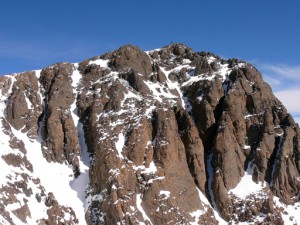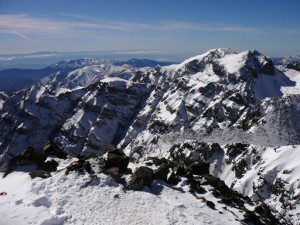Mount Toubkal and the scientific career

Spanish versus English
December 5, 2008
A media star?
January 14, 2009(January 3nd, 2009)
As I trek towards mount Toubkal, the highest peak (4167 meters) in the Maghreb, in Northern Africa, I cannot avoid to think that climbing a mountain is like to solve a scientific problem.
The most important things are to chose the target, the summit you want to reach; and the strategy, the path to the top, which implies a specific technical expertise, such as the use of ice-axe, crampons and so on.
In astronomy, like any other science, we also select a problem, like star formation in low-mass stars (one of my expertises), the specifics of that problem, such as the properties of very young objects when they still have an envelope and a circumstelar disk, and the technique (photometry or high resolution spectroscopy, for instance).
During the process, different obstacles appear in the way: insurmountable walls and wide cracks on the snow; lack of positive results or funding. But in most of the cases, there is always an alternative, one only need to look for it.
Climbing, like research, is a team effort. But in the end, it is also a personal challenge, a small Odyssey, and all people involved in the task want to achieve something, to arrive to their own Ithaca. For sure, endurance is a must.
Perhaps the most interesting thing is not to solve the problem, or to reach the top, but the way up, the beauty we can find: in the valleys and the surrounding ridges, in the unexpected results or new phenomenologies in the scientific arena. The aesthetic view of the problem, perhaps the ecstasy when we, alone and perhaps for a brief spell of time, face the whiteness of an untouched slope in the peak or frozen columns of water in a cascades, when we get a little closer to the truth, to the mysteries of nature.
LINKS:
- Wikipedia: Jbel (Jebel) Toubkal / Adrar n Toubkal
- Jebel Ouanoukrim, Morocco
- Peaks higher than 4000 meters in Africa.
- Wikipedia: Ithaca
- Wikipedia: Odyssey


